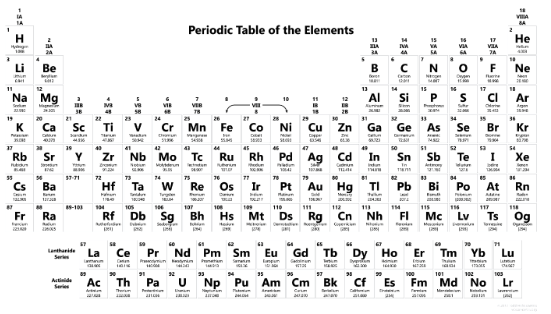Identical chemical properties are shared by the elements arranged in periodic table groupings (vertical columns). Members of a group have the same number and distribution of electrons in their valence shells, resulting in this resemblance. But there are other patterns in the periodic table as well. For example, the metallic nature of the atoms rises as we proceed down a group. Polonium is a silvery-grey solid that conducts electricity at the bottom of group 16 (6A), while oxygen is a colourless gas at the top of the group.
A proton and an electron are added to the valence shell for each element that crosses a period from left to right. The number of electrons in the valence shell does not change as we progress through the elements in a group, but the principal quantum number does. We can study some of the features that regulate the chemical behaviour of elements by understanding their electrical structure. The electrical structure of the elements influences these properties. Atomic and ion radius, ionisation energy, and electron affinity all fall into this category.
Trends of Chemical Reactivity in Periodic Table
The systematic arrangement of elements in a periodic table reveals periodic tendencies in the properties of elements that are revealed by the periodic table. For example, the atomic and ionic radii of elements decrease from left to right as they move through a period. The ability to recognise periodicities in the fundamental properties of elements (atomic and ionic radius, ionisation enthalpy, and electron gain enthalpy) will allow you to conclude that an element’s electronic configuration is primarily responsible for the periodicity in its fundamental properties. Following a thorough examination of the concepts, we can establish a link between chemical properties and the fundamental properties of elements.

Observe the trends in an element’s essential characteristics first.
Atomic Radii and Ionic Radii Are Both Defined As Follows
During the course of a period, the atomic and ionic radii of elements decrease as they progress from left to right. Moving from the top to the bottom of a group causes them to increase in size because the number of shells increases in proportion to the increase in atomic number.
The Enthalpy of Ionisation Is Measured As
The atomic radius decreases as one moves from left to right in a period of time. Consequently, when the size of an atom shrinks, the attractive attraction between the nucleus and the electrons on the outermost shell of the atom grows. As a result, ionisation energy normally increases from one period of the periodic table to the next across the table. When we look at the trend of ionisation enthalpy in the groups, we can observe that it drops from the top to the bottom of each group. This is owing to the fact that the number of shells grows as one moves down the group, resulting in the outermost electrons being further away from the nucleus and, as a result, the effective nuclear charge being less. Second, the shielding effect increases along the group as the number of shells increases, which leads to a decrease in the ionisation energy as the number of shells increases in the group.
The Enthalpy of Electron Gain
Increasingly negative electron gain enthalpy is observed as we move from left to right in a periodic table.
When energy is released while absorbing an electron, this is referred to as a negative event.
When energy is supplied to an atom while an electron is added, this is considered positive.
The trends in properties shown above can be summarised as follows: the elements at both ends of the periodic table are highly reactive (note that noble gases have completely filled shells, so they are the least reactive), and elements in the middle of periodic table are the least reactive (note: noble gases have completely filled shells, so they are the least reactive). The alkalis, which are at the extreme left of the periodic table, readily lose electrons and create cations. The halogens, on the other hand, are the elements on the extreme right of the periodic table that quickly obtain electrons and combine to create an anion. It can be compared to the metallic and non-metallic properties of elements in terms of their properties. During the course of a period, as one moves from left to right, metallic properties diminish while nonmetallic features rise. Metallic traits rise as a group progresses, while non-metallic features decrease as a group progresses.
Chemical Reactivity (Also Known As Reactivity)
It is possible to gain a comprehensive understanding of an element’s chemical reactivity by observing the reaction of the element with oxygen and halogens. Oxides are formed when elements interact with oxygen. The elements on the far left of the periodic table react with oxygen to generate basic oxides (Na2O), whereas the elements on the far right of the periodic table react with oxygen to form acidic oxides (H2O) (Cl2O7). The amphoteric (Al2O3) oxides of the elements in the middle of the periodic table are the most common. Amphoteric oxides are those that have the ability to act as both acids and bases.
Conclusion
We can conclude that As the elements are arranged in a periodic table, certain periodic tendencies in element properties are revealed. Atomic and ionic radii, for example, decrease in periodical fashion from left to right. The periodicity of attributes is mostly determined by the electronic configuration of an element, as shown by trends in fundamental properties such as atomic and ionic radii, ionisation enthalpy, and electron gain enthalpy. We can discover a correlation between chemical properties and the fundamental qualities of elements after examining the topics in depth.
 Profile
Profile Settings
Settings Refer your friends
Refer your friends Sign out
Sign out






